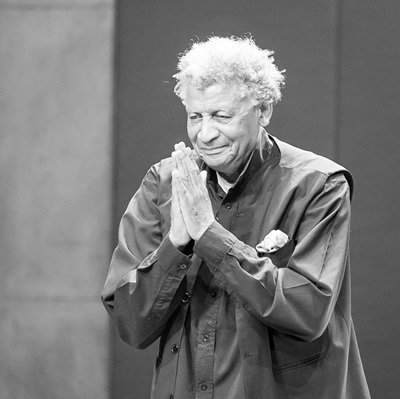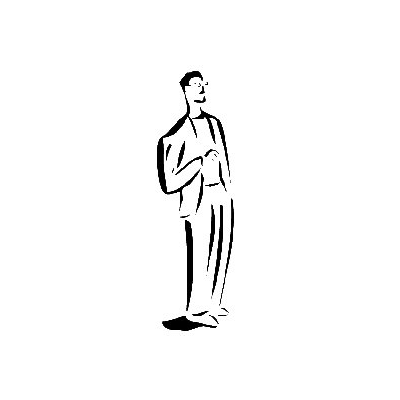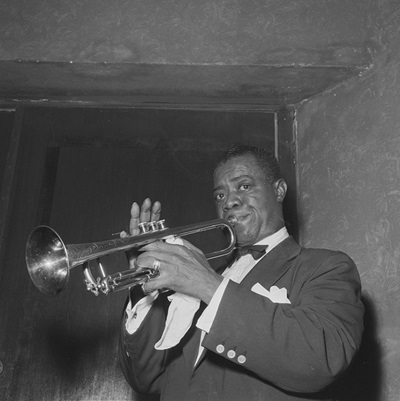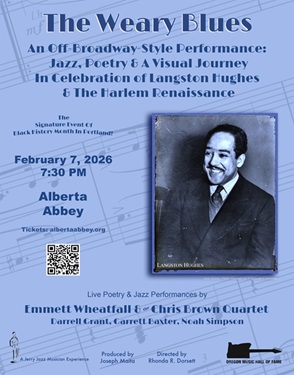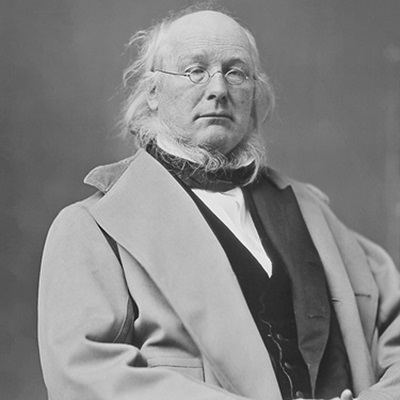.
.
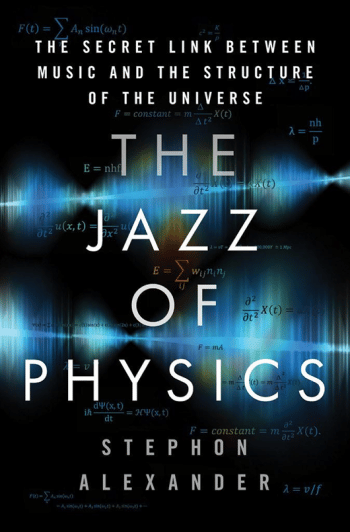
.
.
Wow, Space Is the Place After All
by John Kendall Hawkins
.
“The subatomic particles we see in nature, the quarks, the electrons are nothing but musical notes on a tiny vibrating string . . . Physics is nothing but the laws of harmony that you can write on vibrating strings . . .The universe is a symphony of vibrating strings.”
– Michio Kaku, Big Think, November 28, 2015.
.
…..Reading Brown University cosmologist Stephon Alexander’s The Jazz of Physics: The Secret Link Between Jazz and the Structure of the Universe [Basic Books] had me reminiscing about some times I had. Listening to the music of Sun Ra and his Arkestra. Space is the place, he’d sing, a raucous horn, percussion rush, aural complexity. And Coltrane. Interstellar. And the ever quirky Escalator Over the Hill; “If you find Earth boring, join up for Outer Spaceways Incorporated.” Carla Bley, A Chronotransduction. Sun Ra. Yeah, I fired up my Spotify account and got busy with my ears. Everything was suddenly all over the place. In space.
…..Back in the day, at UMass-Amherst, I almost signed up for a course called Physics for Poets, but I couldn’t find the place you signed up at, and wandered a lot in circles, not unusual for me back then. When I finally found it, about three weeks later, I was thrown for a loop right away. I failed, said Fuck It, not unusual for me to say back then, a proto-Lebowski who pissed on his own rug. But recently I came across a piece in Inside Higher Education while looking for a job as an adjunct philosophy instructor in southern California; it was titled, “It’s Time to End ‘Physics for Poets’.” A ‘pure’ science guy moans,
The classic “Physics for Poets” survey class, which attempts to cover an entire field in one semester, is almost always a disaster, satisfying neither the students taking it nor those teaching it.
…..That was my experience in a nutshell. Paper airplanes featured. The feel of Welcome Back, Kotter. After that I was wet with the weasels and the nihilists coming at me, at times unleashed. It’s true though, what the guy says, survey courses — meh! I’m taking a Coursera Big History course now and feeling smaller by the minute, but no wiser for the physics, like a diminished key. But key to what?
…..The Jazz of Physics is an excellent book. It’s full of interesting and unusual anecdotes. It’s well-paced and pays homage to the greats of cosmology and astrophysics. It’s written by a guy who appreciates the need to use colorful analogies to explain difficult concepts in science, whose study, as we hurdle toward a quantum-driven world, is fast becoming yet another point of division between themes that have the Knowledge and themes that don’t. Stephon Alexander, a Trinidadian whose family moved to the Bronx and pushed him through the local public school system, knows the story of scientific elitism and he refers to it several times in the book in a Woke way.
…..The Jazz of Physics is a memoir that takes you through the author’s early introduction to science — by way of music. Alexander is a musician — a saxophonist — already in a band by the time he is introduced to his first charismatic instructor, Mr. Daniel Kaplan, in high school. Alexander describes how Kaplan introduced the very first class to physics:
Mr. Kaplan walked into the middle of the room, sat on an empty desk, and took a tennis ball out of his pocket. He threw the ball up in the air and caught it.
…..Kaplan then asks the Question that hooks young Stephon, “What’s the velocity of the ball when it returned back to my hand?” And when the kid responds, “It’s the same,” the teacher smiles, and the beginning of a beautiful relationship is had. It gets even thicker, when it turns out Kaplan is a master composer and plays baritone sax.
…..Eventually, Kaplan steers Alexander toward John Coltrane and his secret link to Einstein. Alexander returns to this moment, not only in the book, but later, after his career in cosmology has taken wing and he finds himself delivering a TED talk and holding, then bouncing a tennis ball and asking Kaplan’s question of the audience of TED genius-receivers (more elitism).
…..It turns out that Albert Einstein was a music lover who played piano. We’re told that his wife would watch him tinkle and tickle the ivories (and the ebonies) and then jot down figures. Alexander tells us about the general connection between Einstein and Coltrane:
[Coltrane] was a musical innovator, with physics at his fingertips. Einstein was an innovator in physics, with music at his fingertips. Nevertheless, what they were doing was not new. They were both reenacting the connection between music and physics, which had been established thousands of years earlier when Pythagoras — the Coltrane of his time — first worked out the mathematics of music. Pythagoras’s philosophy became “all is number,” and music and the cosmos were both manifestations of this philosophy. In the mathematics of the orbits of the planets rang “the music of the spheres,” playing a harmony with the tones of a vibrating string.
…..This connection between Coltrane and Einstein becomes an inspiration for Alexander’s later adventures in string theory — resonant both in his physics mind and on the sax. He adds,
One day, Kaplan gave me an album, Giant Steps by John Coltrane. This groundbreaking album, released in 1960, was, in hindsight, a demonstration of Coltrane’s “sheets of sound” and a sonic equivalent to Einstein’s bending of the space-time fabric.
…..This is, of course, a very welcome key insight to Coltrane’s musical thinking for those not fully invested in his sound.
…..In a reprise of his opening moments with Mr. Kaplan, Alexander, after reading a book by Yusef Lateef, Repository of Scales and Melodic Patterns, “a compilation of a myriad of scales from Europe, Asia, Africa, and all over the world,” goes to UMass-Amherst in search of the author keen to tell him he knows the secret of Coltrane’s scales. He hooks up with Lateef and magic is conjured:
I expressed how I thought the diagram was related to another and seemingly unrelated field of study—quantum gravity—a grand theory intended to unify quantum mechanics with Einstein’s theory of general relativity. What I had realized, I told Lateef, was that the same geometric principle that motivated Einstein’s theory was reflected in Coltrane’s diagram.
…..Coltrane’s diagram shows cosmic relationships, musical intuitions of Einstein’s own gedankenexperiments performed as he whiled away his time at a bureaucrat’s desk affirming the originality of others. Lateef tells Alexander “how [Coltrane’s] diagram approximated cycles of fourths and fifths” and introduces him to “his concept of autophysiopsychic music, which is music from one’s physical, mental, and spiritual self.”
.
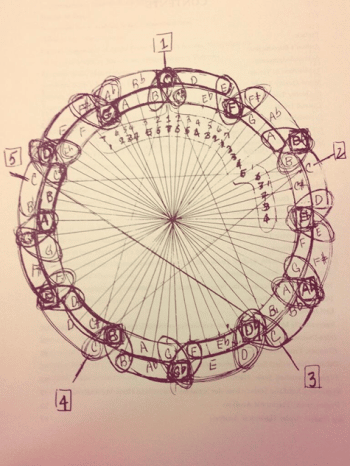
Coltrane’s diagram
.
…..It’s a memoir that tells a story that once again seems to me unique to the Black experience in America. It reminds me of a more recent memoir I read (and reviewed), N, by James Henry Harris, a professor of homiletics at Virginia Union University. Whereas Harris relates his mature age experience of going to classroom set in an old plantation and taking a graduate course full of whites talking Huck Finn and his relationship to escaped slave Jim, while prodigiously uttering the N-word, Alexander recounts his Caribbean heritage and the early days in New York after his family’s migration. America was the Land of Opportunity, and Alexander is pushed to succeed — as a musician. He paints the scene:
On a sunny summer day, Ruby Farley — Mum to her grandchildren — sat sternly in her rocking chair, a flowery Caribbean head tie wrapped around her head. Children were playing Wiffle ball outside her Bronx brownstone. With her melodious Trinidadian accent, Mum cried, “Ah don’t care if yuh have to sit down and practice on de piano for hours, yuh not leaving until yuh learn dat song!”
…..There are practical reasons for Mum to push her grandson. To Mum, and many Afro-Caribbeans of her generation,” Alexander writes, “being a musician was one of the few professions that afforded economic and social mobility.” Blacks are musical, you see, Alexander puts it similarly in the memoir later.
…..But, despite his understandable moaning at having to practice scales and chords until he was strung out and fatigued, at one glorious point he is Woke by an observation he has while listening to his own playing:
[T]he classical composers, whose music I was learning to play, hooked my adolescent curiosity. They were able to put the scales together to make music! The idea that so many songs could come from only twelve keys fascinated and absorbed me. As I practiced, I became distracted by thoughts that were shaping into profound questions. How did people come to invent this thing called music? Why was it that when I played a major scale, I felt happy? C, E, and G, all notes in the key of C major, were happy notes. These are the first three notes in the first line of Elvis Presley’s song “I Can’t Help Falling in Love”—“Wise (C) men (G) say (E).” But when my finger climbed down from that white E key to the black E-flat key, that happy sound became sad. Why?
…..Good stuff. He is always conscious of his race. But Alexander will soon discover that he has the “chops” to intermingle concepts in space and time — both cosmological and on the musical scale.
…..One amusing section of the book is Alexander’s description of “skipping” school and going off on adventures in the city. He tells of coming under the unintentional, but eventually welcome tutelage of a group of misfits calling themselves the Five Percenters. They had a strange cosmology that entertained the notion that “humanoid-like aliens [had come] from space to interact with ‘the original Asiatic black man.” (Sounds like Sun Ra already.) They would hold “intellectual debates” that Alexander likens to “battle rap” that he sees as a form of escape from a bleak future (onnacounta). Alexander tells us,
I sought my escape through comic books, video games, and my newfound love for science. These guys adopted a worldview from their leader Clarence 13X, a former student of Malcolm X, who, after attaining spiritual enlightenment, spread the following gospel throughout the streets of New York City:
– 85 percent of the masses blindly follow religion.
– 10 percent of the masses are deliberately misleading the masses.
– 5 percent are enlightened and realize that they are “gods” of their own destiny.
– Mathematics is the language of reality, and in order to master nature, a Five Percenter must understand the mathematical patterns underlying nature: they called this supreme mathematics.
…..Alexander is strangely influenced by this latter insight and its implied freedom is an inspiration for his own mathematical and musical flights of ‘elegance’.
…..Alexander talks of a privileged beginning in his science career, mingling with Nobel laureates, such as Leon Cooper, co-inventor of the Cooper Pair (superconductivity), or those who studied with them, and meeting super stars of jazz, such as Ornette Coleman. He notes,
I have paved an unconventional path fusing jazz and physics to arrive at my profession as a theoretical physicist. It has only been possible because, over the last twenty years, I have been mentored and empowered by many teachers and friends, such as the Nobel laureate and superconductivity and music-loving pioneer Leon Cooper, as well as physics-enthusiast musicians, such as Ornette Coleman and Brian Eno. They taught me the importance of interdisciplinary thought and of seeing how analogies could be used to push the boundaries of knowledge.
…..Fusion reigns. And this Age of Relativism has taught us all the need to accommodate interdisciplinary syntheses into our future thinking as we go in search of the lost chord. Coleman will introduce Alexander to the concept of “harmolodics,” which he calls “a new ‘attitude,’ or strategy, for improvisation.”
…..One of the best offerings of the book is Alexander’s constant referencing of analogies, which are often evocative or playful, and always at the core of his approach to understanding the cosmos. Early on he tells the reader,
This book is also an exercise in the power of analogies. By reconnecting the disciplines of physics and music through analogy, we can begin to understand physics through sound. We will see that harmony and resonance are universal phenomena and can be used to explain the dynamics of the early universe… [and] life’s quantum origins.
…..This will be one of many times that Alexander will try to marry (successfully, in my humble O) the work that music does with the deep structure of the cosmos by relying on an analogy to get his point across. In his first gig as a grad student, Alexander signed up for a Cooper group (Cooper was a neuroscientist) and worked with the brain and its constellation of synaptic firings. He recalls asking himself, “Who would have thought computational neuroscience would turn me into a cosmologist?” (This is a point in the book when I got queasy — “computational neuroscience” may be my Three Stooges Niagara Falls Achilles Heel trigger: It just makes me think about how quantum computers will one day soon speed bag our brains and turn us into hepped-up auction English Duck Rabbits, and suddenly I’m fulminating and foaming).
…..But Alexander is not me and soldiers on. He’s working on neural networks, the Hopfield model, “how associative memory works” (nyah, woo-woo-woo), and goes about magnetic fields and spins and “emergent physics,” he uses an analogy:
The effect that one atom has on the other atoms around it is called interaction energy, a type of stored energy known as potential energy. Like all forms of potential energy in physics, this is a quantity that nature minimizes. For example, as you stretch a rubber band, its potential energy increases. Once you let it go, it will snap back to its original position, expending or converting that potential energy into kinetic energy or motion. This process minimizes the potential energy.
…..The rubber band analogy is an oldie but a goodie; I myself like to rejuvenate it by imagining that I’m releasing that potential energy against my little pesky sister’s backside, me howling mit Halarität, her yowling from the room like a lost snowbound Yeti, at the nature of the cosmos, Mum all black hole gravity from the kitchen: Daddy’s belt will take away my de-light.
…..Anyway, Alexander says he came away from his grad studies on the brain with a new appreciation of neural networks and analogies:
I took away two important lessons working in the Cooper group. First, I will never forget the value and beauty of seeing and applying similar patterns from one field to another. Applying analogies across disparate fields is more of an art, I learned, than pure science. This also happens in music, when different music traditions are fused—for example when Coltrane took musical devices from other cultures and infused them into the jazz tradition. Coltrane skillfully integrated aspects of the Indian raga system into his improvisational repertoire, which is especially interesting because there are some similarities among some Indian scales and modal jazz. This fusion occurs in one of Coltrane’s most famous songs “My Favorite Things.”
…..Fusion reigns, indeed.
…..One question that keeps stepping in Alexander’s way, like a schoolyard bully who wants his Twinkie, is “Why is there something rather than nothing?” (This is, of course, the opposite of what the typical poor kid from the Bronx wonders.) Alexander gets lucky. One night at New York’s Village Vanguard he is listening to tenor sax star Mark Turner, and at intermission hears his hero say to someone in explanation,
When I’m in the middle of a solo, whenever I am most certain of the next note I have to play, the more possibilities open up for the notes that follow.
…..Alexander goes, “Turner’s words confirmed that I was not hallucinating.” Our physicist-cum-saxophonist had been thinking along similar lines while relating scientific concepts to music. He writes, “How do all the matter and fields and its associated cosmic structure arise from a state of emptiness? After all, some sort of magic must have happened in our featureless early universe to ignite the first structures.” Apparently, a lot of these guys think like that. Whadda ya gonna do?
…..Race hangs around as an issue, in the usual way. Alexander is Black who has been “given the opportunity,” as they say, to excel and become a leader not only in physics but as a Black. It’s a situation whites don’t have to worry about. During his postdoctoral pursuit of a suitable academic position, Alexander takes up a post in London at Imperial College and confronts his fears:
The fear of failure and the feeling of being an imposter, which still lurked in my subconscious, sprang forth as a brand-new postdoctoral fellow. Although I was accustomed to feeling somewhat isolated from my peers, having been the only black physics PhD student at Brown (and one of three in the US), I now faced the reality of also being one of two Americans in the European network of theoretical physics postdocs.
…..It seemed at first to him a conservative culture, where you expected to “shut up and calculate,” and that worked against his grain at first.
…..However, he finally hooked up with Chris Isham, a mathematical physicist, who he’d first seen in a documentary of Stephen Hawking’s life. Alexander was working now in string theory and chasing the elusive, unifying Theory of Everything. More fusion jazz. Of Isham he observes that he “had a mythological aura around him, and he was graced with the rare combination of independent, creative thinking and superhuman mathematical chops.” Isham introduces Alexander to CG Jung — in particular, has Alexander read Aion: Aion: Researches into the Phenomenology of Self. Our young theorist at first regards Jung’s words as little more than “psychobabble,” but persists, and eventually finds value when he heeds Isham’s advice and begins recording his dreams.
…..Isham also introduces him to Wolfgang Pauli, a physicist who was nominated by Einstein for a Nobel prize for his work with quantum mechanics. Pauli had corresponded with CG Jung, letters which were later collected in a book, From Atom to Archetype. Isham tells him: “You can see that Pauli came up with the Pauli spin matrices from a symbol that appeared in his dreams. Do you want to borrow the book?” Indeed Alexander does and cherishes it:
I treated it like I’d just uncovered a precious font of insights. It was a new groove, which called for new digs. Instead of numerical grumblings in the theory group café over black coffee, I immersed myself in reading the collection of letters over pints in a pub on Portobello Road.
…..Eventually, a dream Alexander has had leads to a sudden physics insight:
I’d been stuck on a project. I was trying to connect string theory to cosmological inflation, the idea that the newly born universe went through a rapid, or inflationary, phase of expansion just after its birth. One night, in the middle of a sax solo on Coltrane’s song “Mr. PC,” an image appeared in my mind that I knew had to do with the resolution of my project.
…..Archetypes now join the rest of the interdisciplinary, free-stylin’ deep thinking tools — Analogies, paradigms, intuition, improvisation.
…..A further feature of the book is Alexander’s reference to his own jazz sax career. He has put out an album, Here Comes Now, which he says is a tribute to insights lit in him by Ornette Coleman and Brian Eno, who together “taught me the importance of interdisciplinary thought and of seeing how analogies could be used to push the boundaries of knowledge.” It’s fun to take time to give a little listen to him playing sax. “One of the best songs on the album, in my humble opinion, is Ornette’s ‘Vortex’,” says Alexander. The album is available at Spotify: .Dig it!
…..Despite the easygoing nature of the book and the excellent explanations that make splendid use of analogies and efficient historical synthesis, I have to admit the science is still hard to follow, at times, even if wholly engaging. I found myself enjoying his interdisciplinary approach and processing of time and space in music and cosmology more than the ambitious project he describes to reach an understanding of Everything tied up in some Christmas somewhere down the road. When he describes his intuitive thinking regarding science and its play in the improvisations of John Coltrane, I get wobbly in the knees.
…..At the end of the book, Alexander relates a lunch time blurb that Nobel laureate Abdus Salam (discovery of the unification between the weak interaction and electromagnetism) makes to a Black colleague at the table: “One day, when your people do physics, it will be like jazz.” Many Black people would jump at the “you people” expression, but Alexander goes the other way:
What a great compliment, an affirmation and acknowledgment of the improvisational, inclusive, cultural, and intellectual contributions of this music called jazz. Embodied in Salam’s statement is how the genius of a people who have created a musical culture as dynamic in sound and rich in metaphor as jazz can contribute to the very enterprise of physics.
…..Taking with a grain of salt the truism that Black jazz is the only true post-colonial American art form, and that jazz is built on the unique Black experience of suffering and resilience in an oppressive white world caught up in skin color, to posit that understanding the universe as akin to plumbing the depths of fusion and free jazz might well instill fear. We were okay with Bach and, before him, Pythagoras, father of our Western musical scales, and we don’t mind a little Holst and the music of the spheres, but goddamn! one can well imagine many a standard issue ‘honkey’ blown away by a cosmos soundtrack that features John Coltrane’s Interstellar Space. “Coltrane’s study of Einstein’s theory of general relativity and the expanding universe hypothesis,” writes Alexander. Cheeses, first, the Jews come for us, then the Blacks, you can almost hear some future MAGA dogmatist snarling.
…..Being Black in a white man’s universe is a leitmotif that plays with a mute throughout the book, and becomes the tension built into the title of his next work, Fear of a Black Universe, which I’m eager to engage next. The Jazz of Physics is a nice ride. The keen and curious — and musical — reader will get lots of inspiration, entertainment and education about jazz and astrophysics from its pages, and I highly recommend it.
.
.
___
.
.

John Kendall Hawkins is an American freelance writer currently residing in Australia. His poetry, commentary and reviews have appeared in publications in Oceania, Europe, and the US. He is a regular contributor to Counterpunch magazine. He is a former winner of the Academy of American Poets prize. He’s working on a novel.
.
.
Watch Stephon Alexander’s TED talk, which explores the parallel between jazz music and the functioning of our universe
.
.
Listen to John Coltrane performing “Saturn,” from his 1967 album Interstellar Space (with Rashied Ali on drums); [Universal Music Group]
.
.
___
.
.
Click here to read John Kendall Hawkins’ review of James Henry Harris’ book, N: My Encounter with Racism and the Forbidden Word in an American Classic
.
Click here to subscribe to the quarterly Jerry Jazz Musician newsletter
.
.
.






